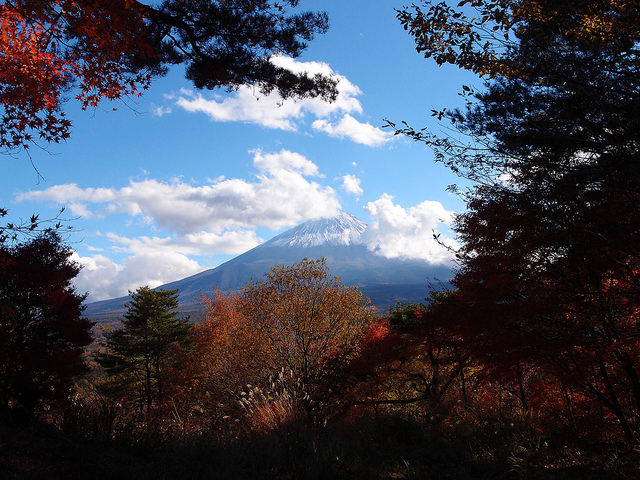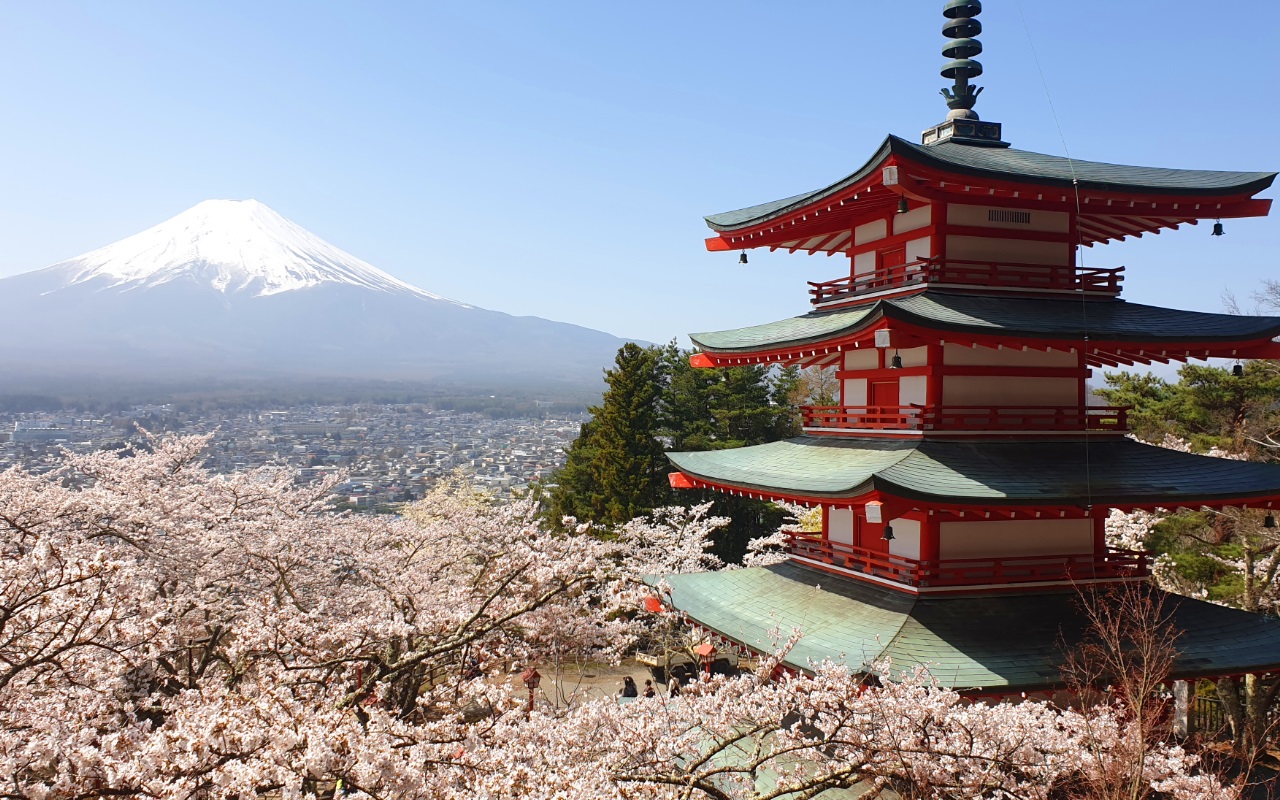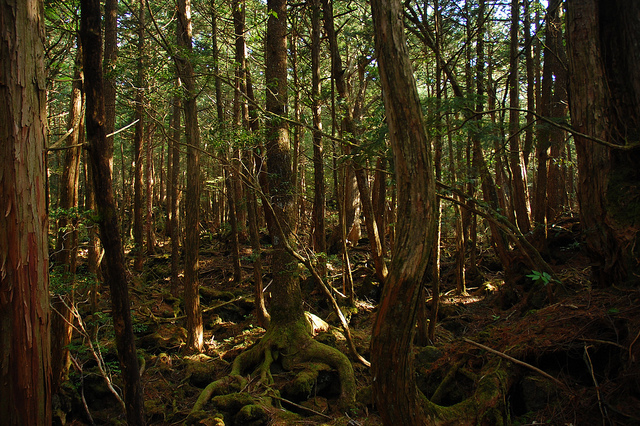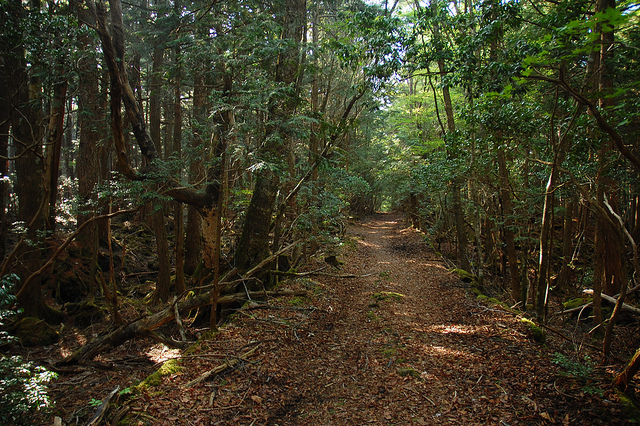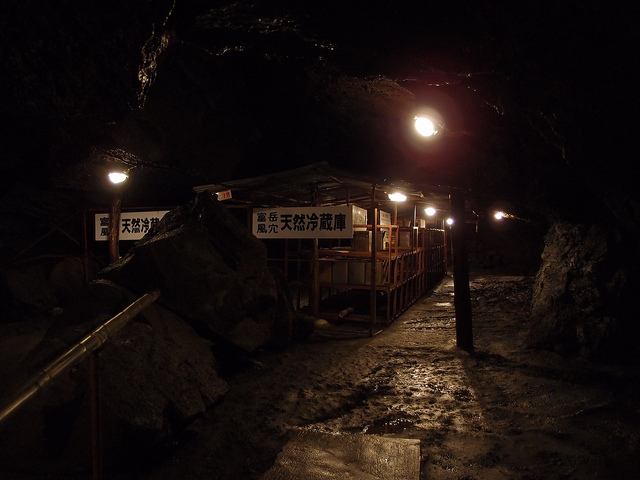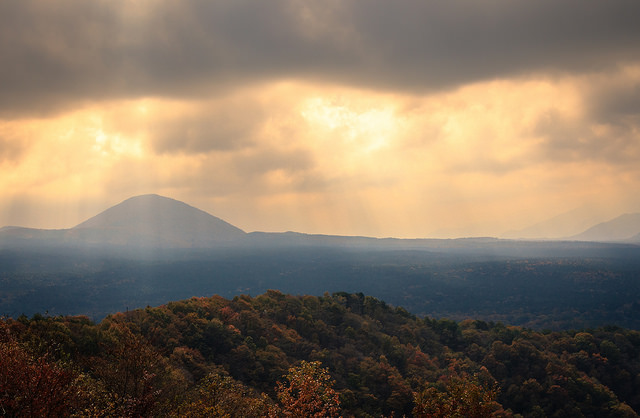Aokigahama , known as the Suicide Forest or Sea of Trees
Aokigahara (青木ヶ原) may not be the first place that comes to mind when one thinks of Japan. The sparkling, futuristic sea of neon lights amid the Tokyo skyline, the picturesque, natural mystique of Kyoto’s majestic temples and shrines, or the iconic Mt Fuji are more likely candidates.
Japan certainly continues to captivate the minds of foreign visitors from across the world with its breathtaking scenery and electric atmosphere.
It should go without saying, then, that a country with such a varied geographical expanse and rich cultural lore isn’t without its oddities. Aokigahara, more commonly referred to by English speakers as the “suicide forest”, is one such place.
Photo by Flickr user: Guilhem Vellut
Aokigahama, Back to the 19th century
Aokigahara has been the site of countless deaths dating back as far as the 19th century, when a practice known as obasute (姥捨て) would have old women abandoned and left to die in secluded areas during times of famine and drought.
Fast forward to the present and the forest has become the most popular place in Japan for people who wish to end their lives.
Photo by Flickr user: Simon Desmarais
This has been attributed in part due to Seichou Matsumoto’s popular 1960 novel Kuroi Jukai (黒い樹海, black sea of trees), in which a heartbroken lover retreats to the forest to end her life. The forest itself has been referenced countless times across various forms of media before and since the novel’s publication.
Aokigahara lies at the foot of Mt. Fuji, Japan’s most historic and splendid of mountains. Due to the density of the forest, it’s said to be easy to lose one’s way if one chooses not to adhere to the designated trails.
Photo by Flickr user: Simon Desmarais
Aokigahara is also notoriously devoid of sound. The further you journey into the heart of the forest, the more you begin to blend in with the deafening silence of the trees.
A popular myth states that due to heavy deposits of magnetic iron underground, conventional compasses are often useless. This makes it even more difficult to navigate its treacherous paths, so travelers should make sure to be careful if exploring is a must.
Photo by Flickr user: Guilhem Vellut
In addition to a lush abundance of trees and greenery, the forest also contains several icy caverns. Some of these are frequented by tourists and are inhabited by a variety of wildlife, such as bats and other woodland creatures.
It’s a common belief that Aokigahara is also plagued and haunted by the yuurei (幽霊, ghosts) of those who died within the forest. As such, it’s often recommended by locals to leave the forest before nightfall.
Hiking in Aokigahama, things you should be careful of
Signs at the entrance urge those harbouring suicidal thoughts to rethink their decision. That has not slowed the rate of suicides in recent years, though, with more than 200 recorded incidents. The monthly amount supposedly fluctuates during March as it’s the end of the fiscal year in Japan and, as such, brings with it much stress and strife.
Those who are unsure whether or not to go through with the act often leave rope or tape on the trees should they change their mind and need a way back. As a result, these markings have often led to the discovery of dead bodies by local officials and hikers.
Photo by Flickr user: Reginald Pentinio
Conclusion
Aokigahara might be just the place for those who find the thought of journeying somewhere off the beaten path exciting.
While the mystique surrounding the forest gives off a fairly morbid tone, it can be a refreshing break from the hustle and bustle of city life. It also offers visitors great photo opportunities while basking in the shadow of Mt. Fuji.
If you’ve got the guts, why not give it a try? Just make sure to stick to the paths and make it out of the forest before dark.
[cft format=0]

